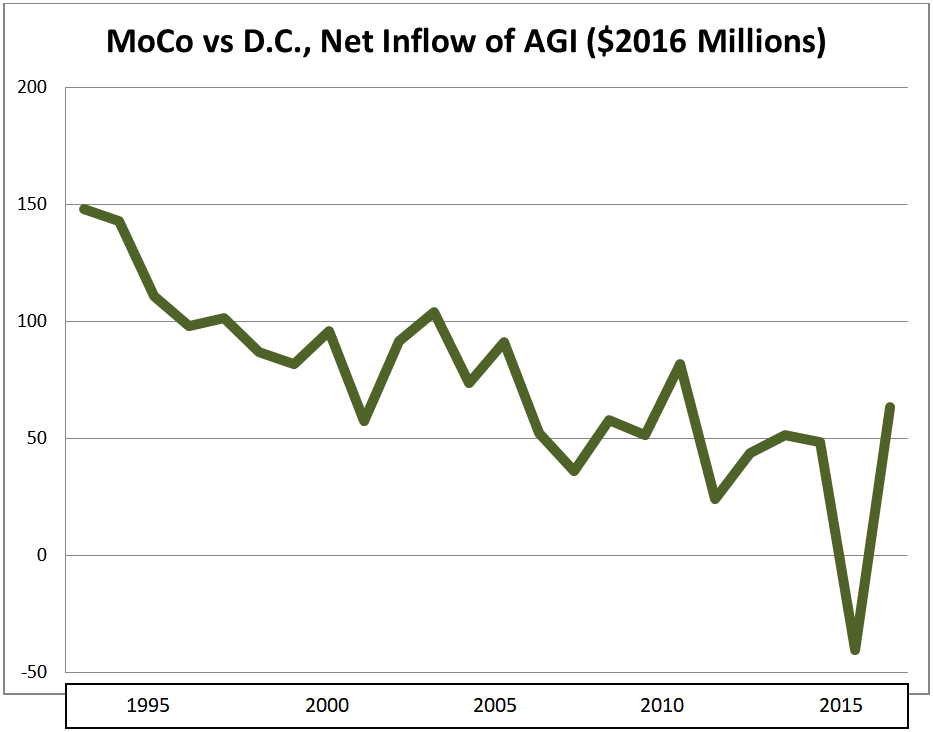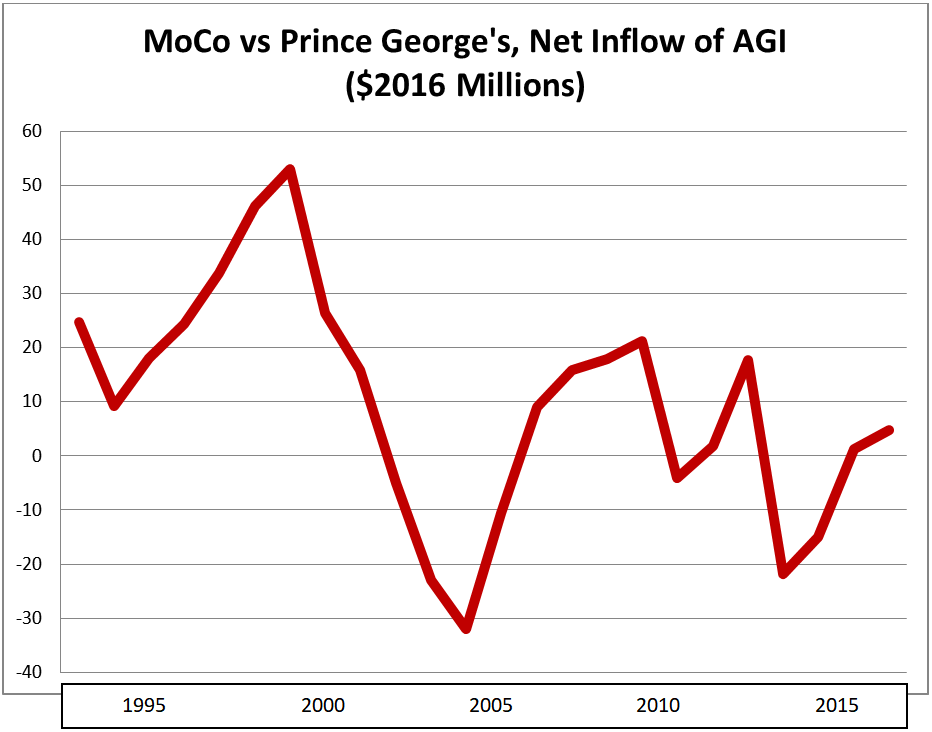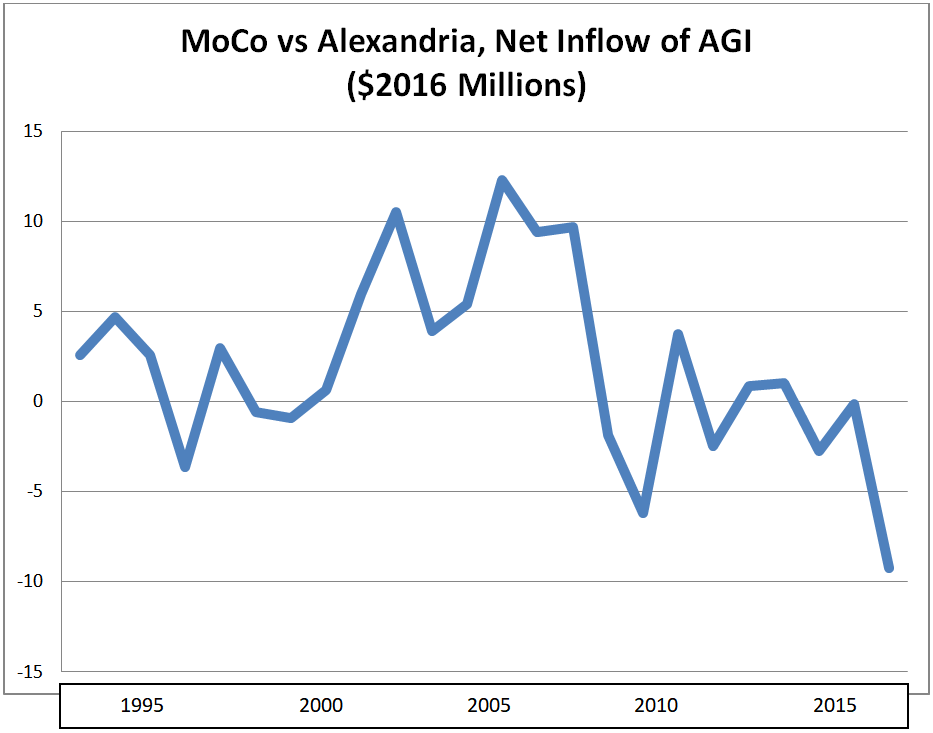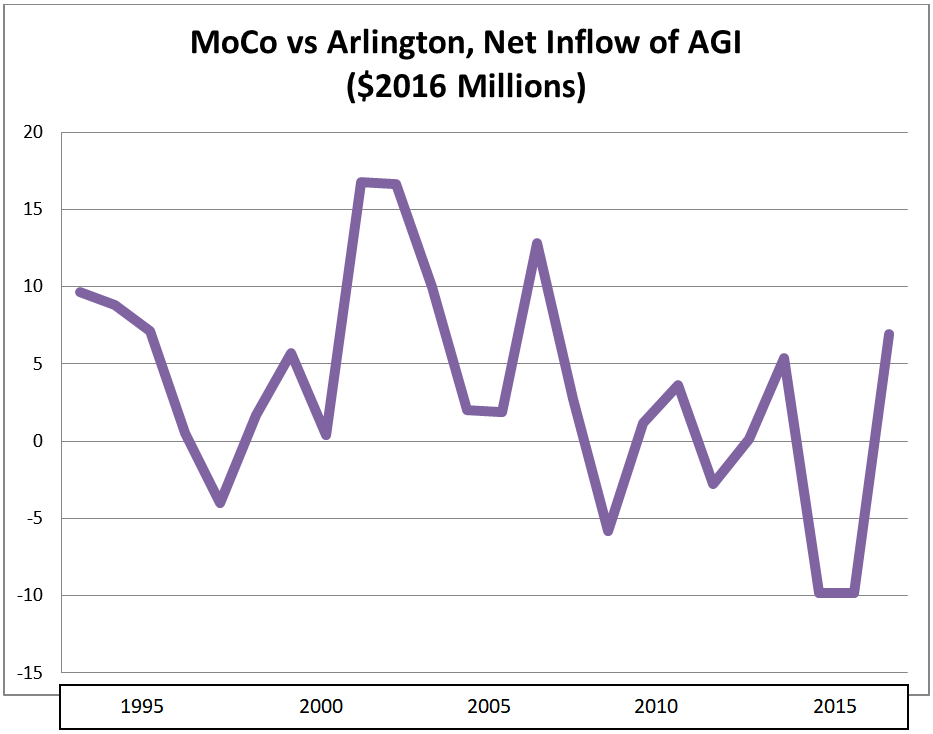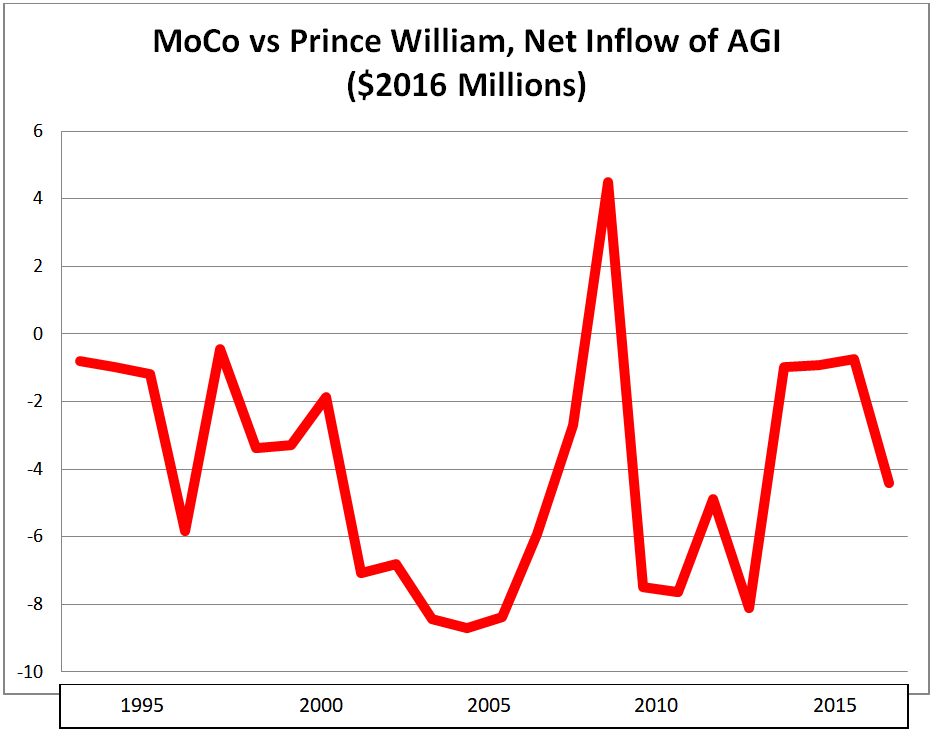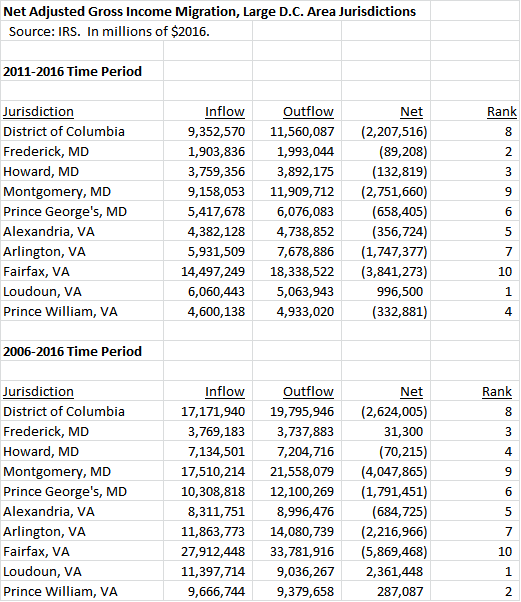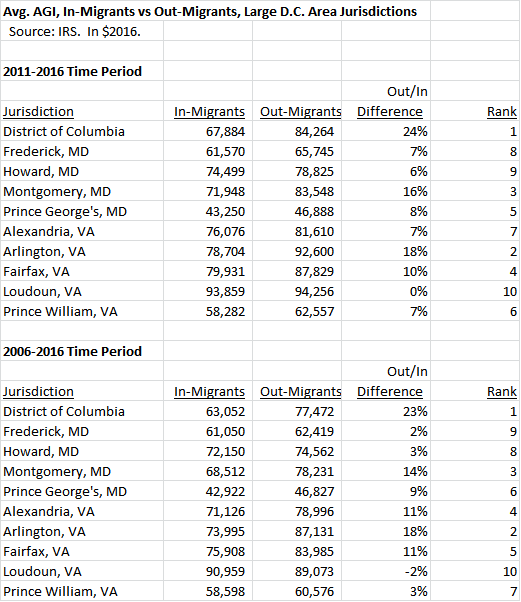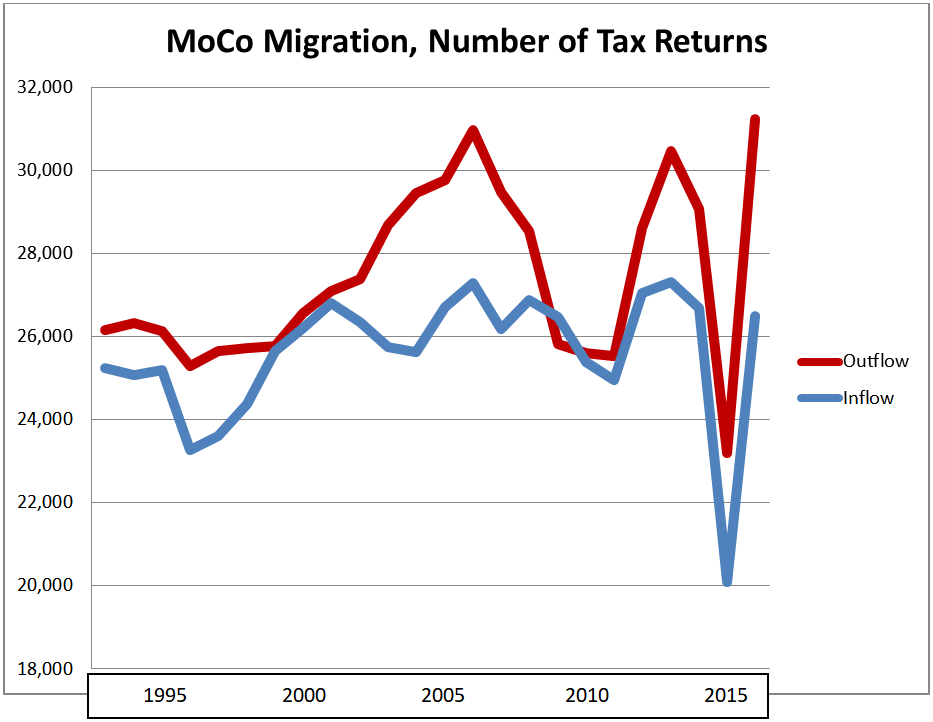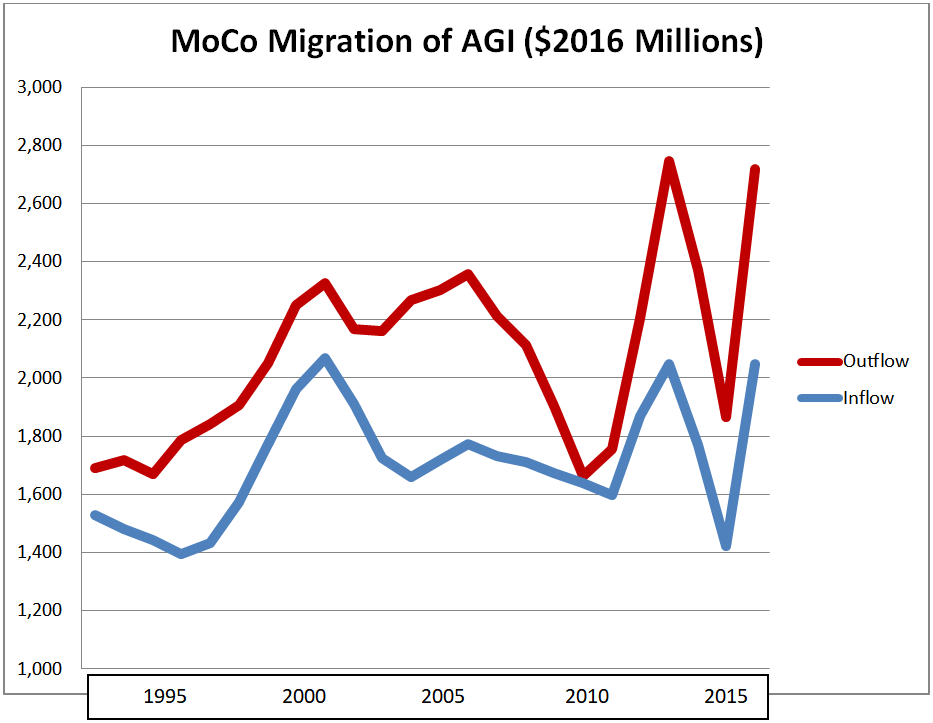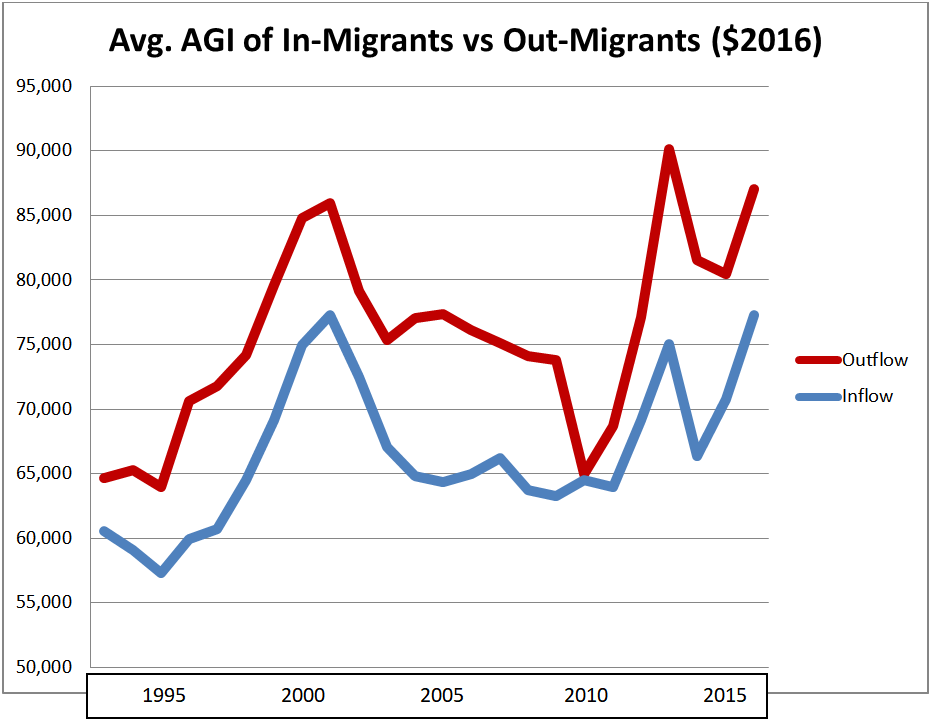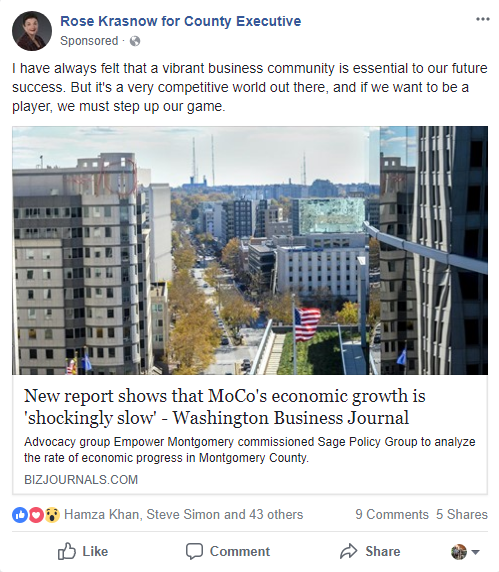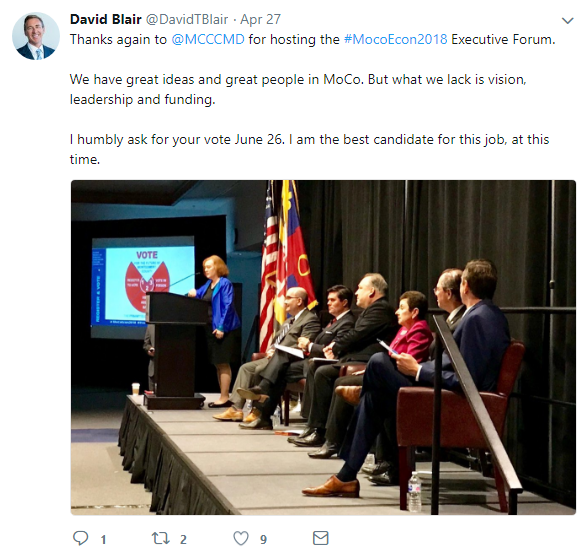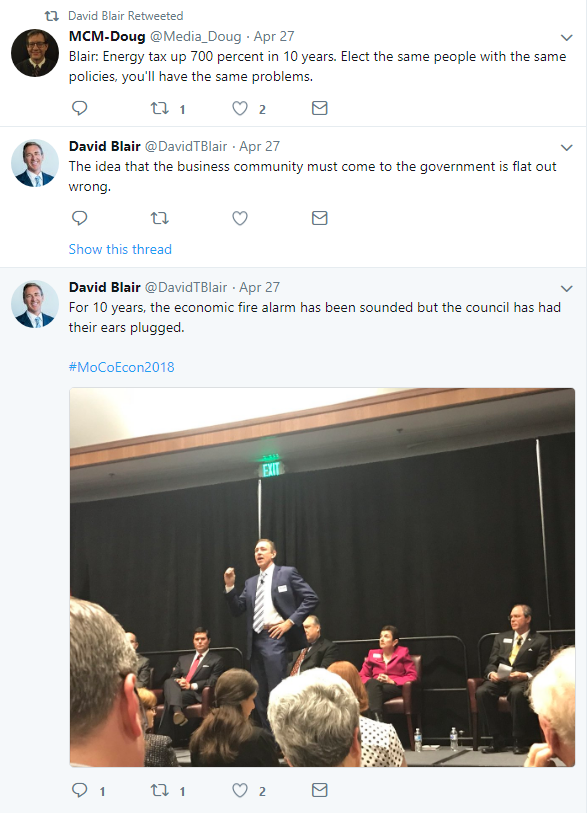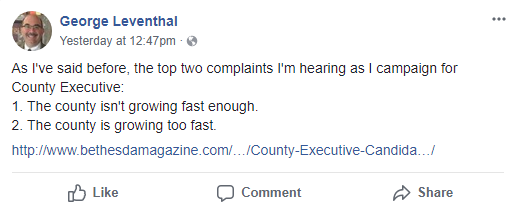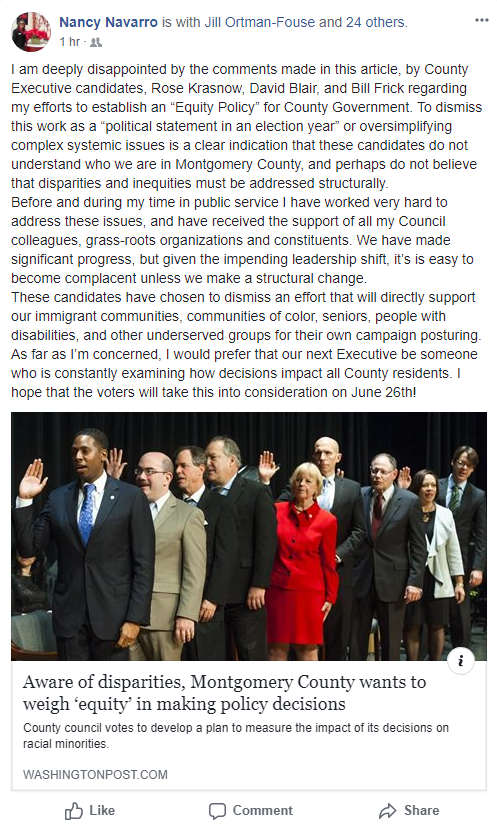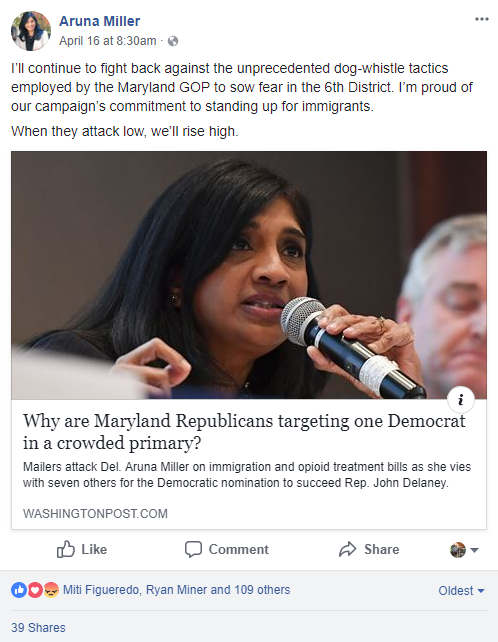By Adam Pagnucco.
A long time ago in a galaxy far, far away, a newish county blogger and professor named David Lublin reached out to a then-young civic activist who had just gotten involved in local politics to write about the county’s economy and budget. The activist, who had only lived in the county for three and a half years and was already raising Cain about a new Metro entrance in Forest Glen, was still figuring out what was going on but – what the hell – he agreed. This was the genesis of my second blog post ever, written in April 2007. (The first was a piece on the Apple Ballot the year before.)
The county’s economic pressures, which have drawn substantial attention on Seventh State, were apparent more than a decade ago. Then as now, the county was dealing with short-term budget issues. But over the long term, I wrote that the end of the real estate boom – which would lead to the Great Recession – would result in three choices to balance the budget and preserve county services: large tax hikes, slowing the rate of budget growth or encouraging economic growth to fund the budget. Many things happened over the ensuing decade: dramatic budget cuts, equally dramatic tax hikes, warfare with the school system and the state over education funding, breaking of union collective bargaining agreements and more. But in the end, more a result of just muddling through rather than any strategy, the county picked options 1 and 2 – tax hikes and slower budget growth – and not option 3, which was encouragement of economic growth. Indeed, because our economy has been so stagnant since the recession, we are now discussing pretty much the same things I wrote about eleven years ago.
Will the next decade be different from the last decade? Folks, that is what this election is about. It’s all up to you.
Here is the piece from 2007 reprinted.
*****
In Montgomery County local races, four issues regularly rise to the top: education, development, traffic congestion and the environment, in no particular order. In last year’s elections, all four issues were discussed by the candidates – especially development. But this spring a fifth issue has risen to surpass all of them: the county’s difficult choices on the budget. The budget is not only an unavoidable issue because it is central to the functioning of the government – it also affects the ability of county leaders to deal with each of the above four issues that are important to voters.
The county has a short-term problem and a long-term problem with its budget.
The short-term problem appeared in the first budget submitted by our new County Executive. While Ike Leggett’s proposal for $4.1 billion in county spending was 6.3% higher than last year’s budget, the increase was below the prior year’s rate of 9%. Leggett pronounced recent budget growth “unsustainable” and declared that no county agency, including the schools, would get its entire budget request. Despite an aggressive lobbying campaign by public sector unions – especially the Montgomery County Education Association – the County Council seems likely to uphold the broad outlines of the County Executive’s proposal.
Furthermore, Council President Marilyn Praisner has identified a $269 million budget deficit for the fiscal year starting in July 2008. The deficit margin is about 7% – which is close to the increase recommended for this year. The council may very well combine a small tax increase with careful maintenance of core spending to deal with this deficit. This may be enough to avoid modifying the county’s labor contracts with its employees as the Council President has recently discussed.
As serious as the short-term problem is, it does not compare to the county’s budget issues of 1991-92 when it suffered from an economic recession. At that time, 7,000 county employees were furloughed for four days. Public employees occupied the council chambers, teachers engaged in a work slowdown and some public school students walked out of classes to protest potential cuts. No one is predicting similar upheaval this time.
However, the long-term budget problem represents a significant challenge. Since 1990, the county’s population growth has averaged 1.4% per year while its budget has generally grown 5-10% per year. In recent years, the county has managed this by depending on big increases in property tax receipts driven by its real estate boom. That real estate boom has ended and property tax receipts will soon reflect that. The county faces three choices in the long run:
1. Large tax hikes to fund budget increases. The danger here is that those tax hikes may slow the county’s economic growth rate even further, worsening its fiscal problems in the future.
2. Slowing the rate of county budget growth to equal the rate of economic growth. This would mean county budget growth of 1-2% per year. This would be insufficient to meet the standards of service to which residents have become accustomed. School, fire, police and health care costs are all increasing at faster rates even if the size of the relevant county departments remains unchanged. This budget growth rate would also be insufficient to adequately compensate county employees, and that would gradually damage one of the nation’s best-educated, least-turnover-prone local government workforces.
3. Systematically encouraging enough economic growth to fund the county’s budget.
The third option reveals a naked truth that was not commonly discussed during the last campaign: budget policy and development policy are inter-related. Over the long run, limiting economic growth will limit the ability of local government to serve its residents. But as any resident of Phoenix or Las Vegas would observe, economic growth has consequences for quality of life. The question of the last campaign was, “Should we have development or not?” But the real question is, “How can we have enough economic growth to pay for government services we need without driving existing residents crazy?”
Economic growth comes from two sources: population growth and job creation. If one of these occurs without the other, or if they occur in different geographic locations, the result is traffic congestion. The two should occur together, at similar rates, and in nearby locations. This has direct implications for county development policy.
In general, the county has three kinds of developable areas: the agricultural reserve, the four downtowns (Bethesda, Rockville, Silver Spring and Wheaton), and the rest of the county. Most residents agree that the agricultural reserve should continue to be protected for cultural and environmental reasons. That leaves the other two areas for consideration.
The four downtowns are unique assets in the county because they each have residential density, concentrated office space and pedestrian-oriented retail space all within walking distance of each other. A resident of Bethesda’s central business district (CBD) who also works in the CBD does not have to use his or her car every day. That individual can walk to work and walk to the grocery store on the way home. The fact that all of the amenities of life are concentrated in a walkable radius cuts back on car use, which cuts down on energy usage, greenhouse gases and pollution. It also reduces the need for road maintenance.
But many residents may want to live in one CBD and work in another. This means that the CBDs should be connected, preferably through transit. Bethesda is connected to Rockville, and Silver Spring is connected to Wheaton through Metro’s Red Line. Bethesda could be connected to Silver Spring through the Purple Line. And a bus rapid transit route from Wheaton to Rockville is the county’s top transit study request of the state government. If both of those projects go through, the county will have four inter-connected downtowns.
How could the county encourage economic growth in downtowns rather than sprawl in non-transit-accessible suburbs? In the downtowns, the county could use zoning text amendments (or more ambitiously, coordinated and complementary updates to master plans) to encourage transit-oriented CBD growth. In non-CBD areas, project area transportation reviews and robust school capacity tests would limit development outside the downtowns. This combination of measures would channel economic growth to the CBDs while minimizing the consequences of traffic congestion and pollution. The side effect would be to encourage the creation of downtown entertainment districts, each customized to reflect the unique cultural identities of each CBD.
For those who are uneasy about growth in downtowns, keep in mind the other two budget options: large tax hikes or gradually deteriorating government services. No local area in this country – even Montgomery County – is immune to the negative long-run effects of either (or both).

